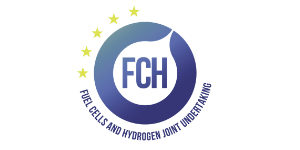
Hydrogen Mobility Europe (H2ME1)
Case Study
The Challenge
Hydrogen Mobility Europe (H2ME1) was the first phase of the largest European deployment for hydrogen mobility to date. The primary aim of H2ME is to demonstrate that operating zero tailpipe-emission fuel cell electric vehicles (FCEVs) in urban applications can be viable for fleets compared to diesel alternatives.
The Development
The FCEVs were deployed with working fleets in a variety of roles, including as taxis and police vehicles, as well as with private customers, over a five year period.
Cenex conducted data capture and analysis of the FCEV and hydrogen refuelling station (HRS) performance to establish the technical readiness of vehicles and stations for wider deployment.
During phase one Cenex also conducted a review of the permitting process and regulations, codes and standards (RCS) involved in installing HRS in different European countries.
The Result
The project has compiled an unrivalled dataset of hydrogen vehicle operation and refuelling since 2015: 630 hydrogen fuel cell electric vehicles have been deployed in 10 countries and 37 new hydrogen refuelling stations installed in 8 countries, achieving 14.5 million km driven and 147 tonnes of hydrogen dispensed across 68,000 refuelling events.
Detailed analysis of the well-to-wheel (WTW) emissions (i.e. emissions from fuel production, transportation and dispensing, as well as usage) in the project showed that FCEVs achieve lower WTW emissions than diesel or gasoline vehicles even using fossil fuel-derived hydrogen. Emission savings compared to diesel or gasoline vehicles are increased significantly when low carbon or renewable (wind- or nuclear electrolysis-derived) hydrogen is used.
The evidence collected and reported by Cenex during phase one of the project shows that the FCEVs have been integrated into fleets with minimal disruption and are used in the same ways (in terms of distance travelled per day, etc.) as conventionally-fuelled vehicles.
Lessons learned from phase one show that future hydrogen mobility strategies should initially focus on high mileage and heavy-duty applications to provide the anchor demand for new installations. This will provide a stronger business case to the HRS operators.
The second phase of H2ME deployment will run until 2022 and will focus on demonstrating a wider range of vehicle use cases in different locations and increased options for producing green hydrogen.
